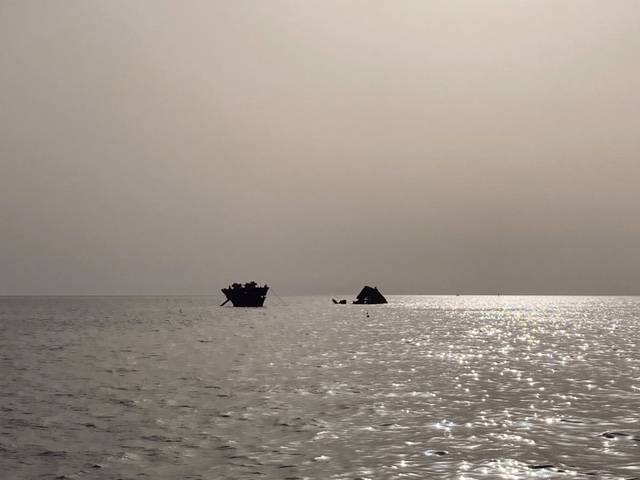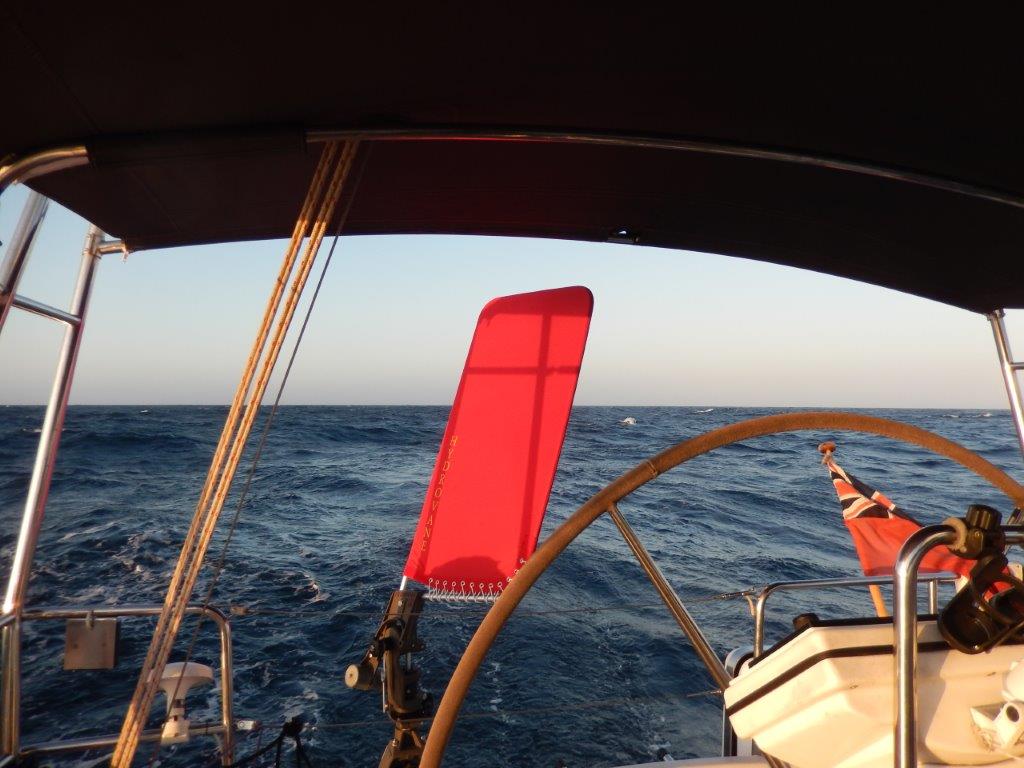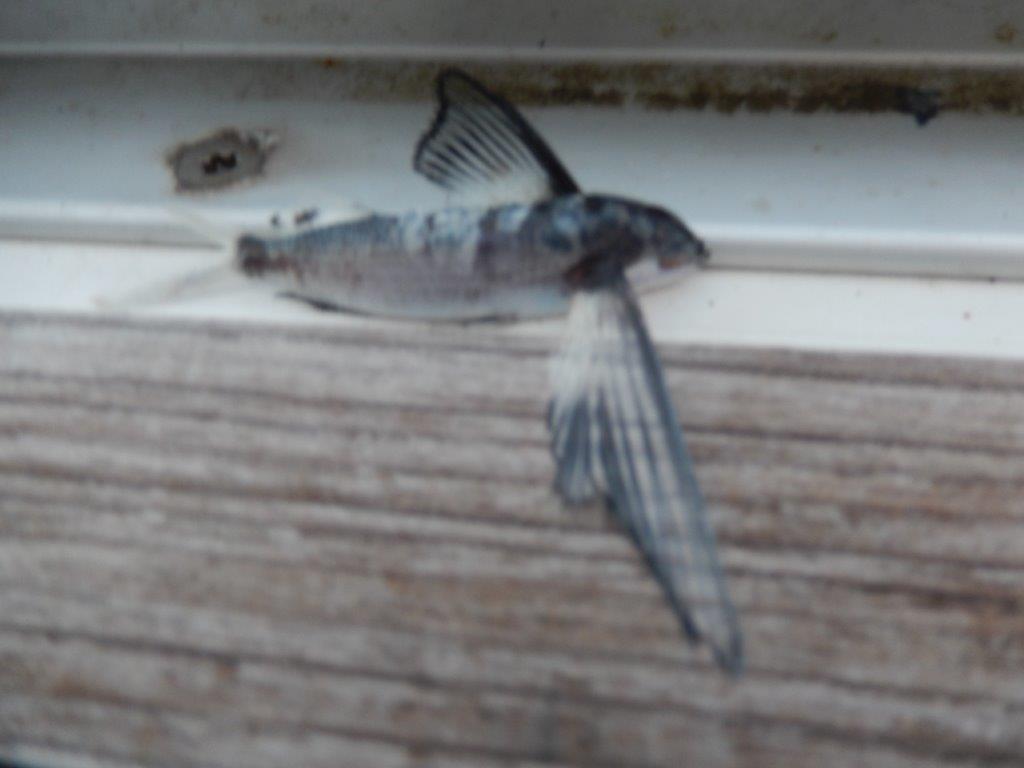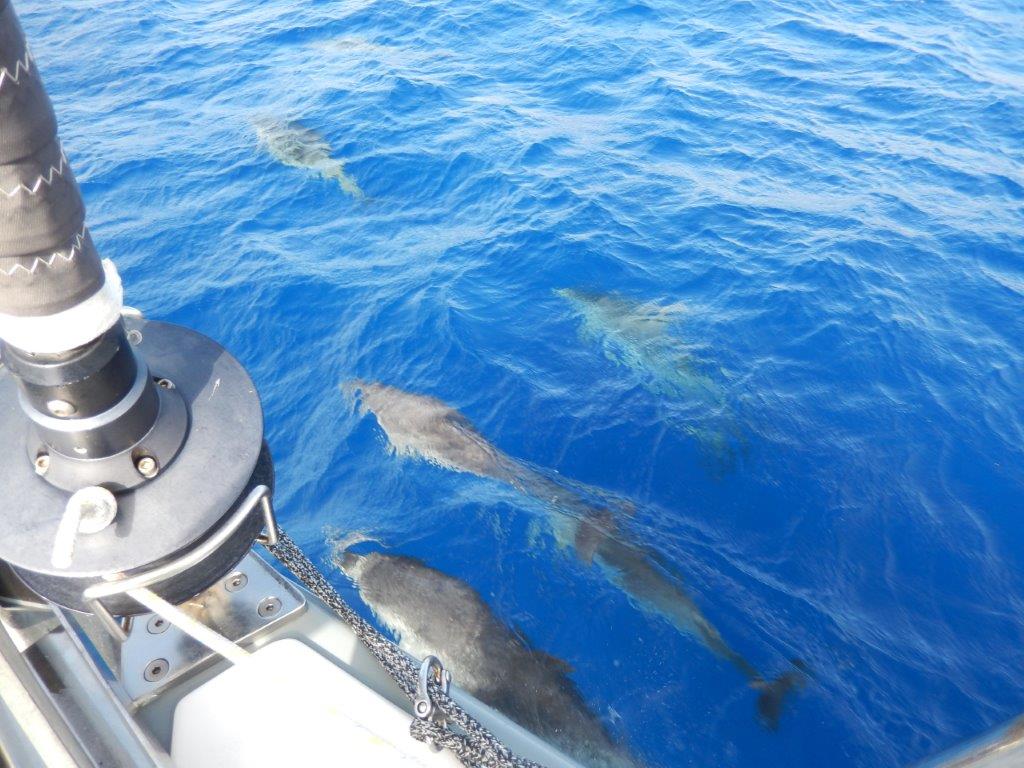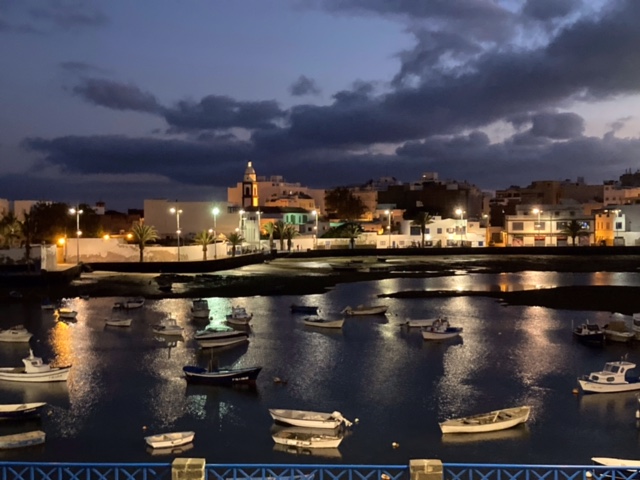Mainland Spain to the Canaries

Griselda
Nicola
Thu 26 Aug 2021 17:26
We had time for one more port in mainland Spain before the weather looked good for our crossing to the Canaries, so we headed from Mazagon to Chipiona, following tightly along the coastline and keeping clear of the fish havens. As we approached our destination we could see the two halves of the wreck we’d seen on our chart and read about in the pilot book - certainly to be avoided.
Chipiona is just north of Cadiz and a great stop for provisioning, albeit a bit of a hike from the marina. Topped up with diesel and water in addition to the food supplies, we headed out to sea early evening for our longest passage yet. Within a few miles we were able to set our heading at 220 degrees, directly for Lanzarote and on went the auto-helm steering. 15-18 knots of wind from the north west meant we made good progress, getting south of Gibraltar by the early hours of the following morning.
Day two was perfect for the cruising chute and then all put away and replaced with a double reefed main sail ready for the nightshift. Day 3 started off as a lovely peaceful white sails day but had to be disturbed by putting the engine on to charge the by then very low battery. With the battery recharged we happily sailed on with the auto-helm, when Griselda suddenly turned away from the wind. Quickly grabbing the wheel and setting her back on course, it transpired the auto-helm and instruments had failed.
Getting the vane/sail from down below, we fitted it to the hydrovane and within minutes the hydrovane had settled on our course. A few checks to see why the electrics had failed and we were none the wiser. The hydrovane had been a last minute addition, but having steered us for 2 days with very few course alterations required, it really did become the 3rd crew member.
We were lucky to have a nearly full moon, making us very visible. We didn’t know if other boats could see our AIS, as we couldn’t see other ships on our plotter following the electronics failure. As it turned out we were still visible on AIS, as Dad told us when we called him the following morning. He’d been keeping track of our progress on MarineTraffic. This was the first time we’d used our Iridium Satellite phone, and once connected to the US, the call was put through to Dad in the UK and call quality was outstanding.
One of the things that struck us about this crossing was the ‘blueness’ of the ocean. It took on a silver hue at dawn and dusk before turning into a vastness of black at night and once south of Gibraltar we rarely saw another vessel. With no light pollution, you could really appreciate a shooting star amongst a sky filled with the easily identifiable constellations.
Following watching the sunrise we found a passenger aboard, who unfortunately had been out of the water a little too long to save. This is the first flying fish we’ve had land on deck and apparently they make a good but rather crunchy breakfast - we’ll stick to the beans and sausages.
And to complete the joy of the passage, within a few miles of landfall, we were greeted by a pod of playful dolphins who dipped and dived under our bow until it was time to drop the sails and turn on the engine.
Port to port we sailed 611 nautical miles, so land was a welcome sight ahead of arriving at Lanzarote marina in the island’s capital city of Arrecife. Having failed to diagnose the electronics problem ourselves, we’re awaiting some help from an electronics engineer, whilst enjoying a great social life with fellow cruisers.
The marina is close to the old fishing harbour with a rich mix of restaurants and bars. The harbour looks very picturesque both day and night.
We’ll be staying put until our electronics are fixed.…
